Our May trip was in two parts – the first part was to look at two Landcare Research biocontrol research plots for tradescantia and broom and then we moved on to visit Massey Arboretum. On a lovely sunny morning, 10 of us met at the research site and were met by Jack Keast, Horizons Biosecurity Officer – Plants. Jack first talked to us about biocontrol for our invasive plants and how they were tested. Then we moved on to the research plot for the trandescantia leaf beetle. Here we saw how the beetle was damaging the plant which will eventually lead to the plant dying. We then moved on to see the damage to broom caused by the broom gall mite. Jack explained at each site how the trandescantia leaf beetle and broom gall mite worked on the plants and how the biocontrol agents spread. All to soon we moved to the second part of our trip – Massey Arboretum. Although right on our doorstep, it was a first for most of us - a visit to the Massey Arboretum, lying behind Bledisloe Park. Dr. Marion Mackay, Senior Lecturer in Environment Management, Massey University, led us on a guided walk through the autumn leaves relating stories and history along the way. The idea for an arboretum germinated in 1943 but it was only when Dave Bull came on the scene in the early 1970’s that it really blossomed. As Head Groundsman Dave established most of the collection from his visits to far off and mysterious places, with a bit of trading around with other like-minded collectors to get something a little extra. The Arboretum is certainly an asset to the city. Peeling bark, winter flowers and autumn colours made for a lovely walk this autumn, but certainly worth a wander any season." Text by Anthea McClelland and Vivienne McGlynn
(Text by Jorinna)
After our summer break, the first trip this year took us to Foxton Beach. Arnim, our trip guide, was awaiting us at the edge of the salt marsh, where he already had installed identification cards at some of the local plant species: we got introduced to beaded samphire, oioi, arrow grass and other small marsh plants. Quite often this required going down on your hands and knees to look at tiny flowers and leaflets. We also learned about the various rushes around. From the salt marsh we went on, up the parabolic dune for a beautiful view across to the ocean and over the Manawatu Estuary, which is a wetland of international significance being a RAMSAR site. Arnim pointed out issues with the use of the area for 4WD activities, which are a thread for nesting birds and for the dune vegetation. We learned to estinguish the native spinifex (a dune stabiliser like the pingao) from the introduced marram grass and made our way down. The big enclosed flat displayed interesting plant communities. Arnim showed us the late flowering makoako, the sand wind grass and many others, while pulling out some upcoming weeds and looking for spiders on the drift wood. We did not find a katipo spider this time but learned lots about its biology and found another native spider instead. Some of the group had pulled out plastic bags to pick up some of the scattered rubbish around. After a bite to eat we made our way back, still discovering more characteristic dune and marsh plants. So many fascinating species, withstanding strong winds, storms and salt accumulation! Yet the biggest threat is man made, by weeds infestation and disturbance through vehicles. This area needs better protection and maybe a community project for some restoration work, to preserve this rich ecosystem for the future. (Text by Jorinna) |

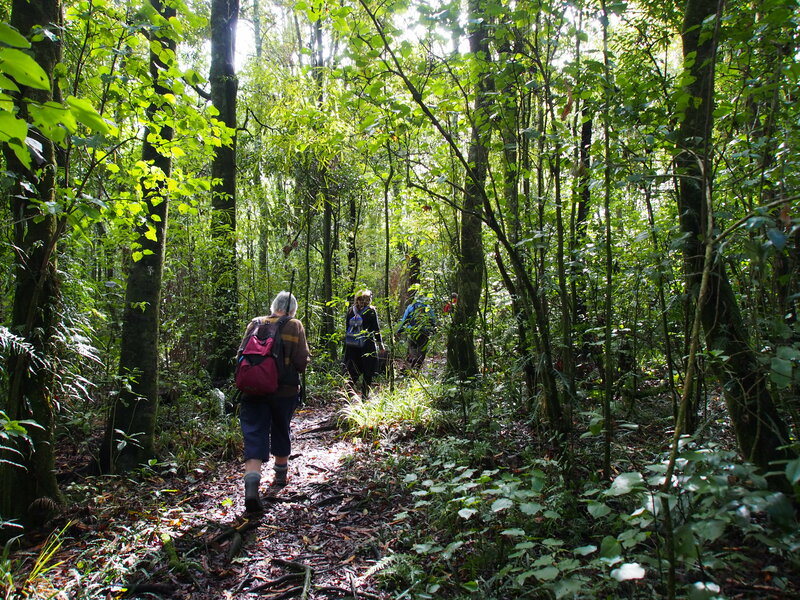
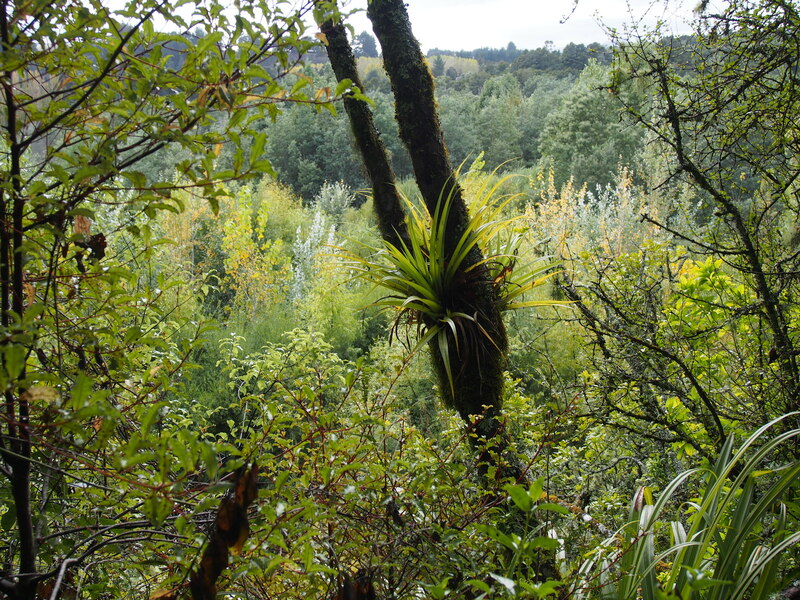
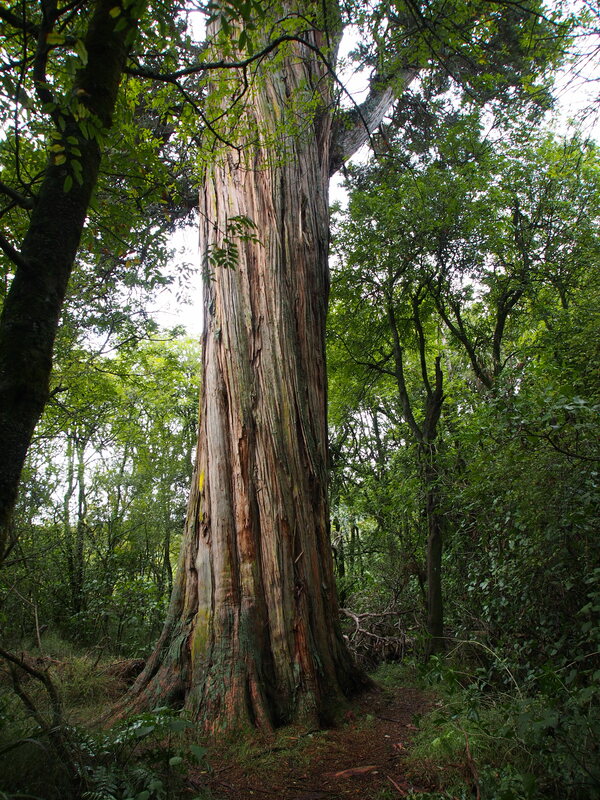
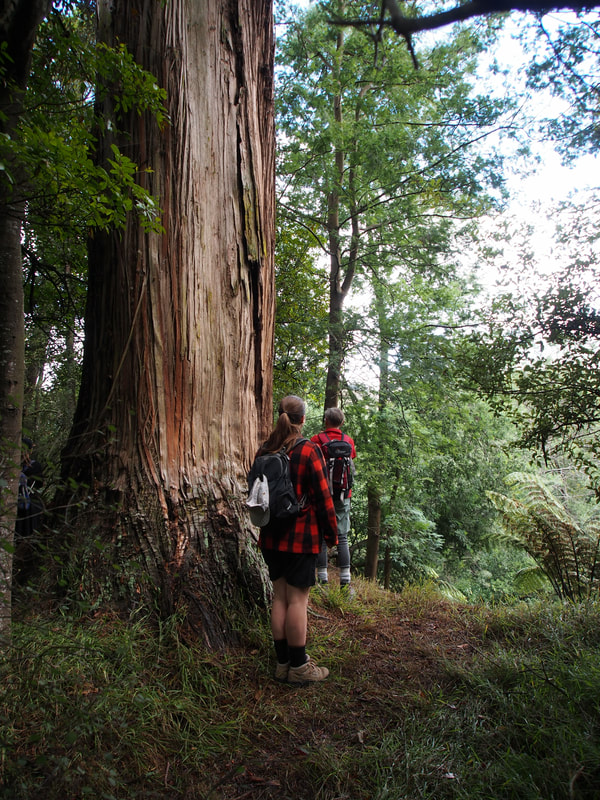
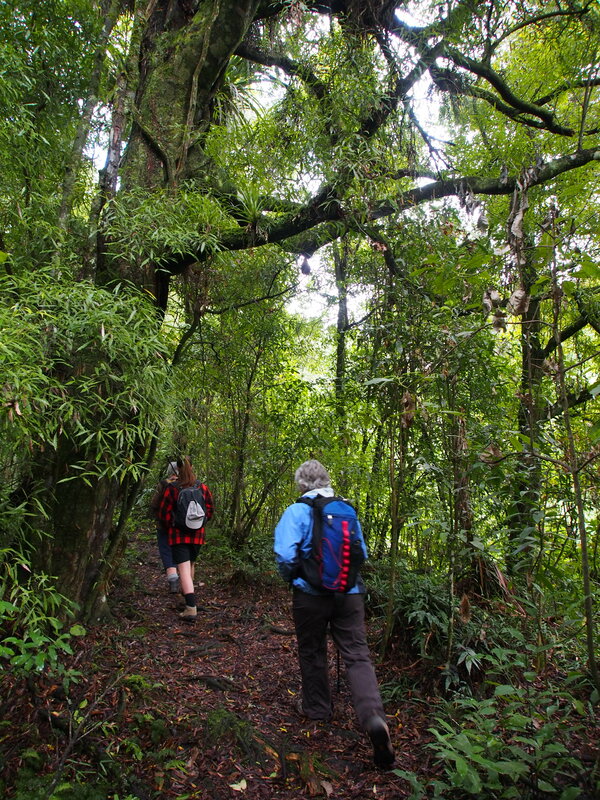
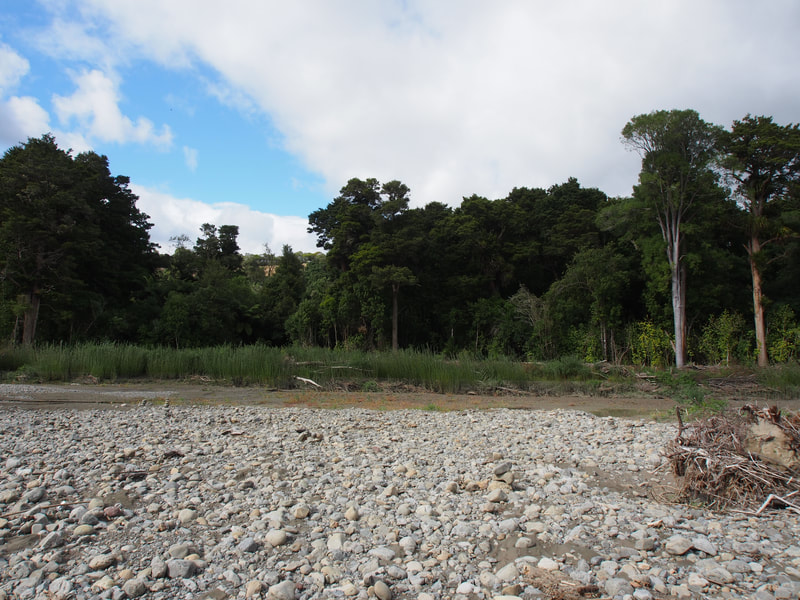
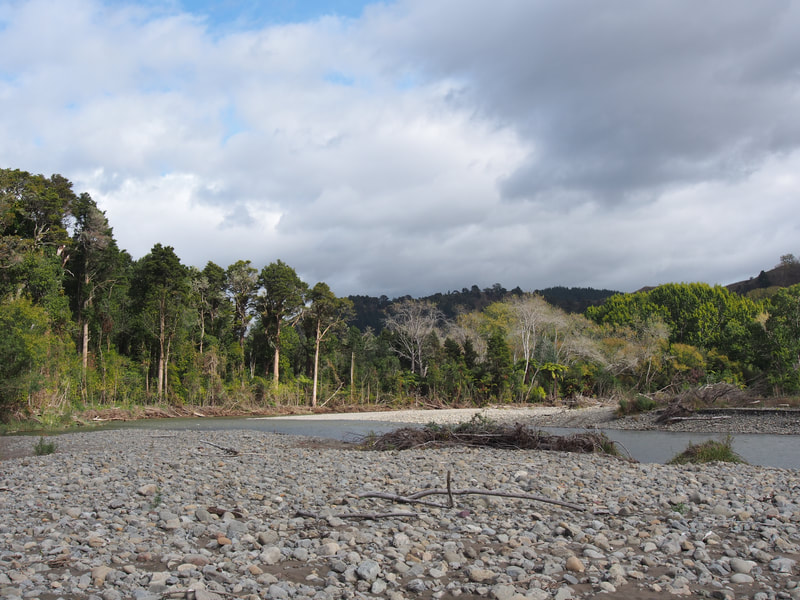
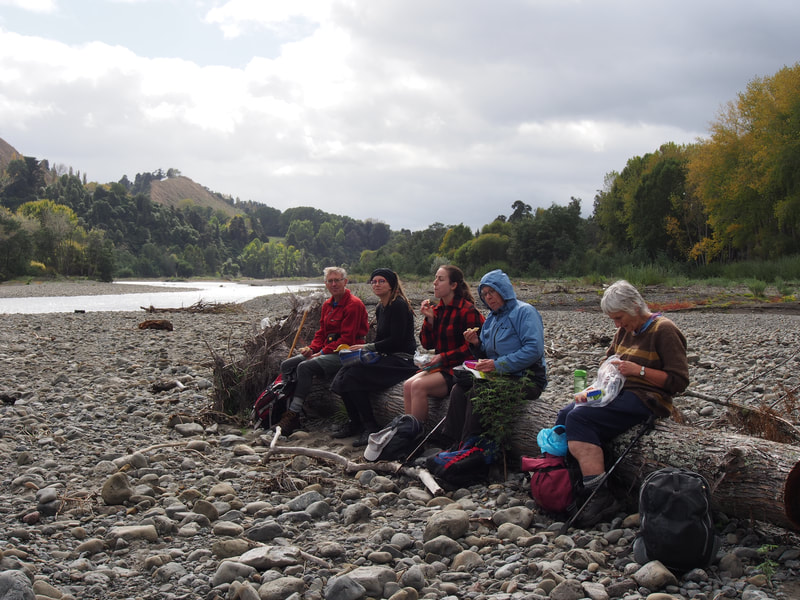
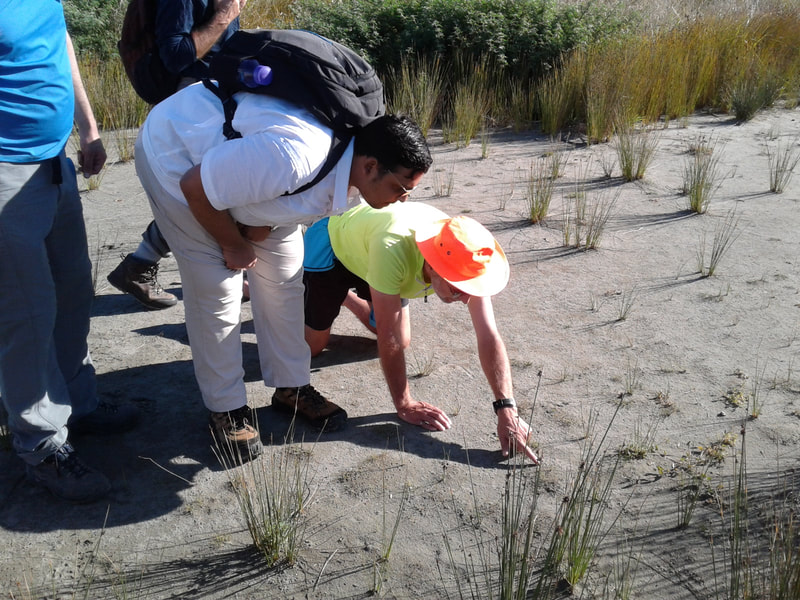
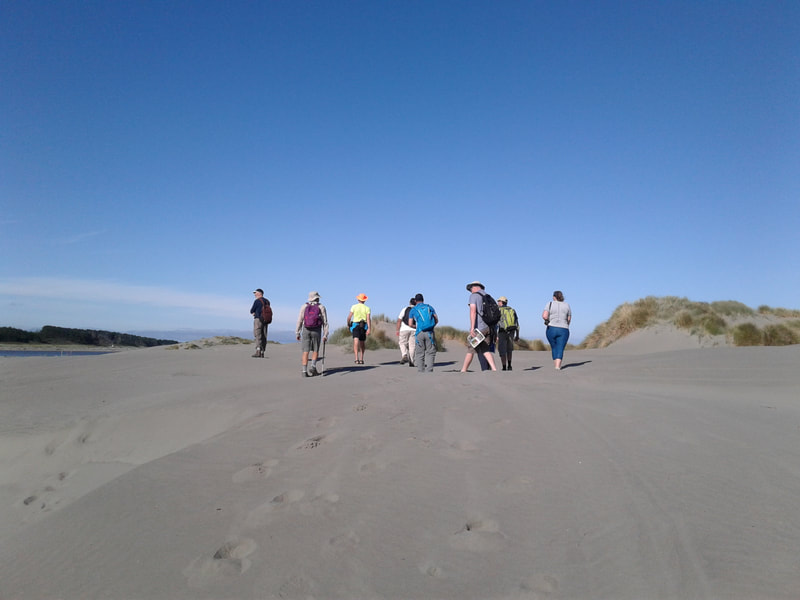
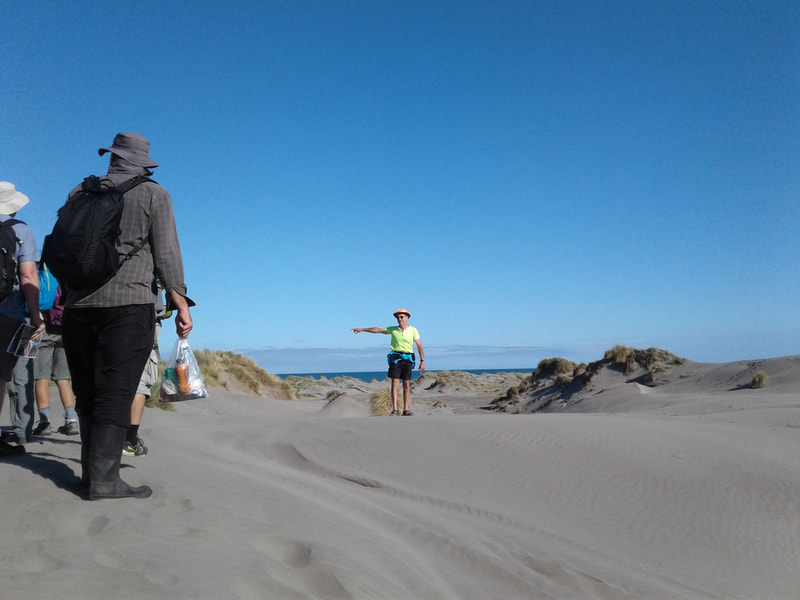
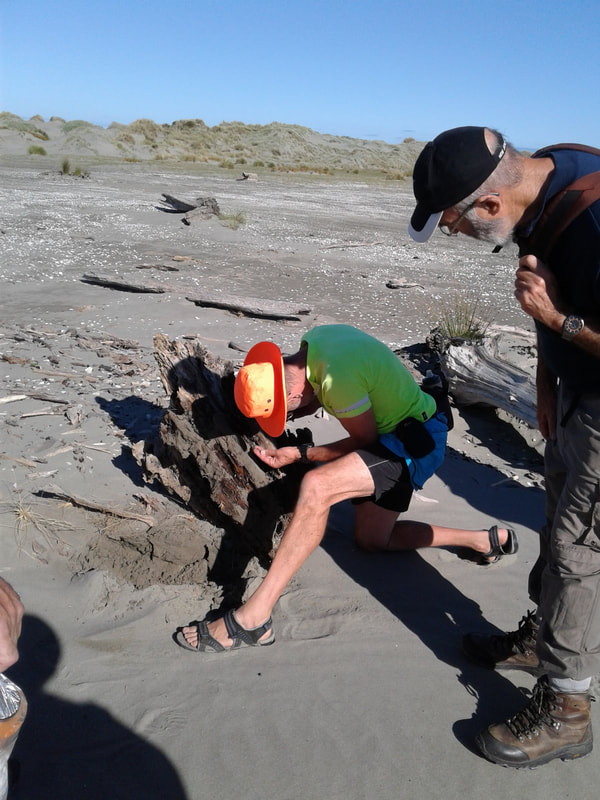
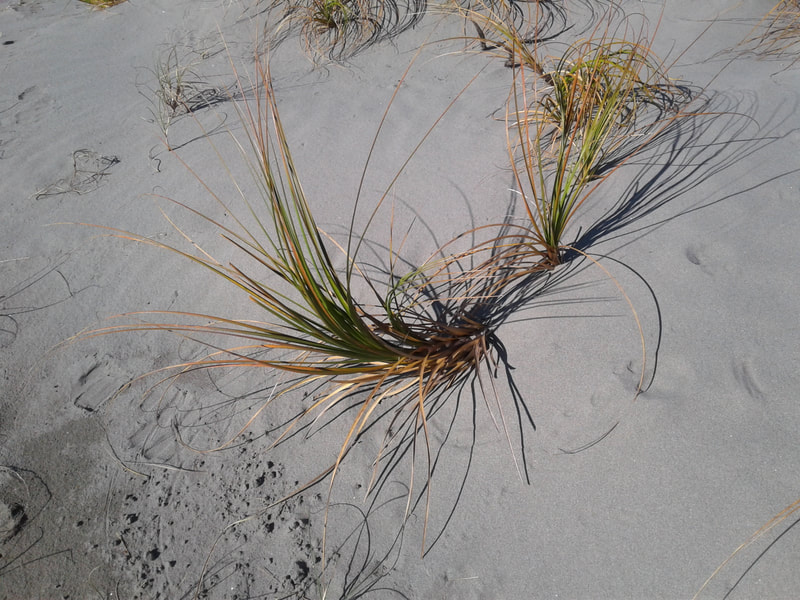
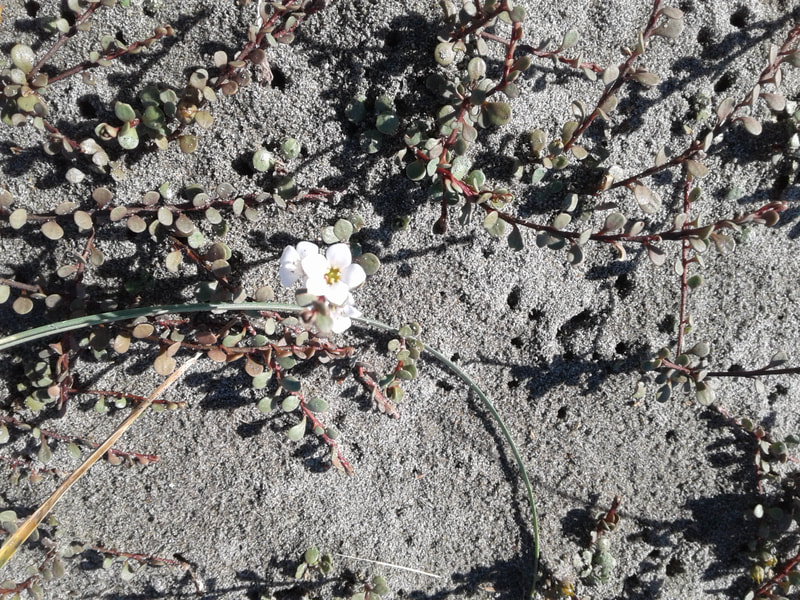

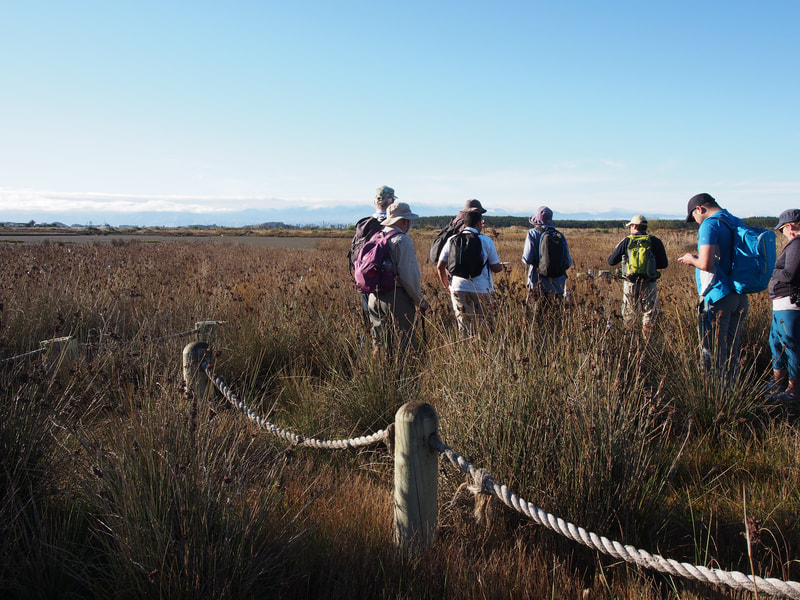
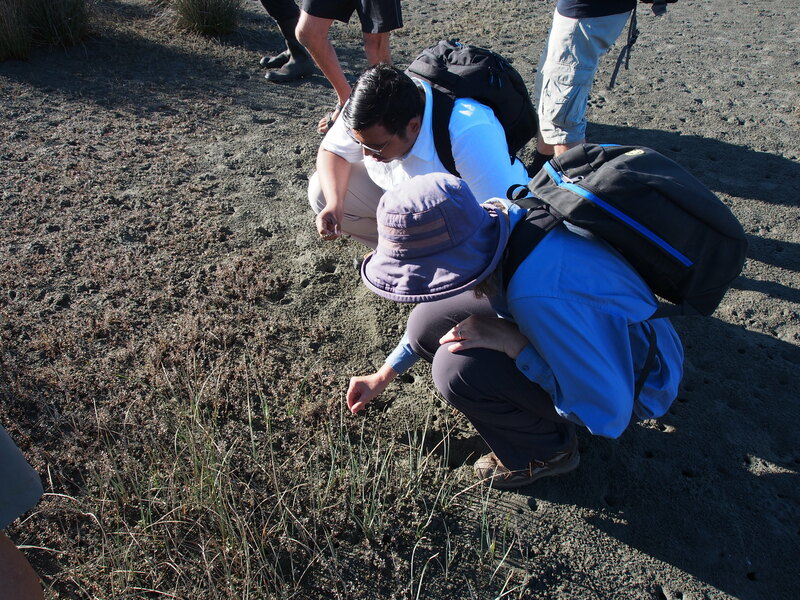
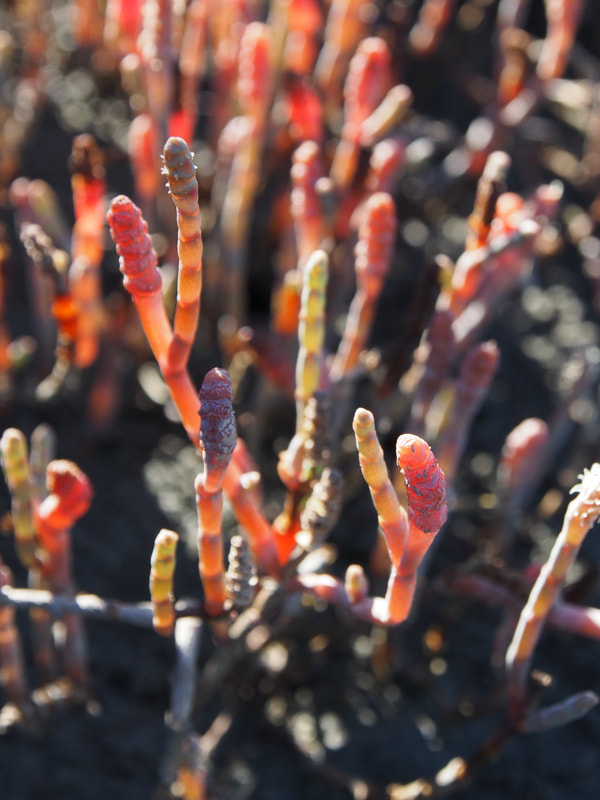
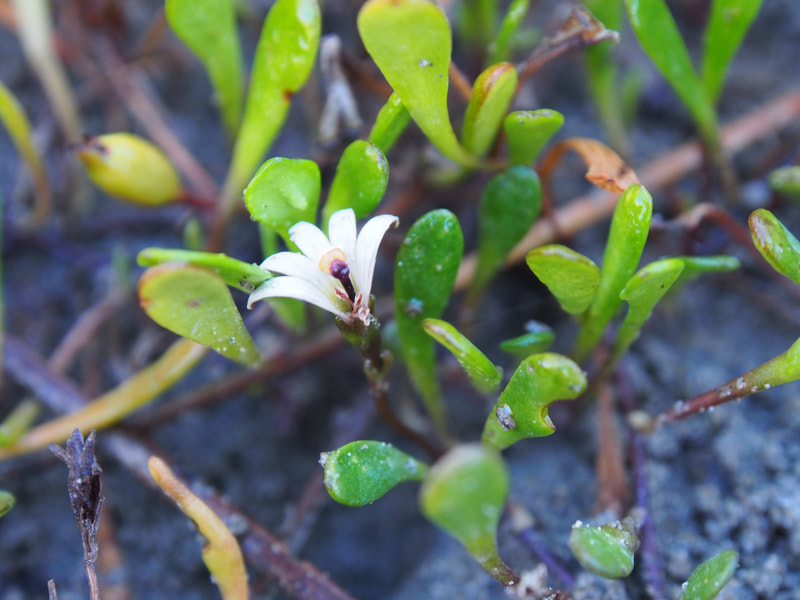
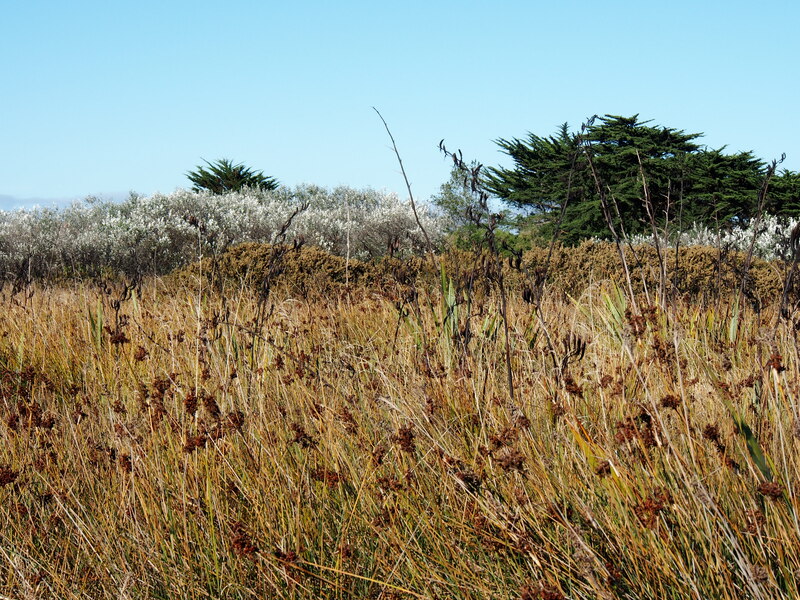
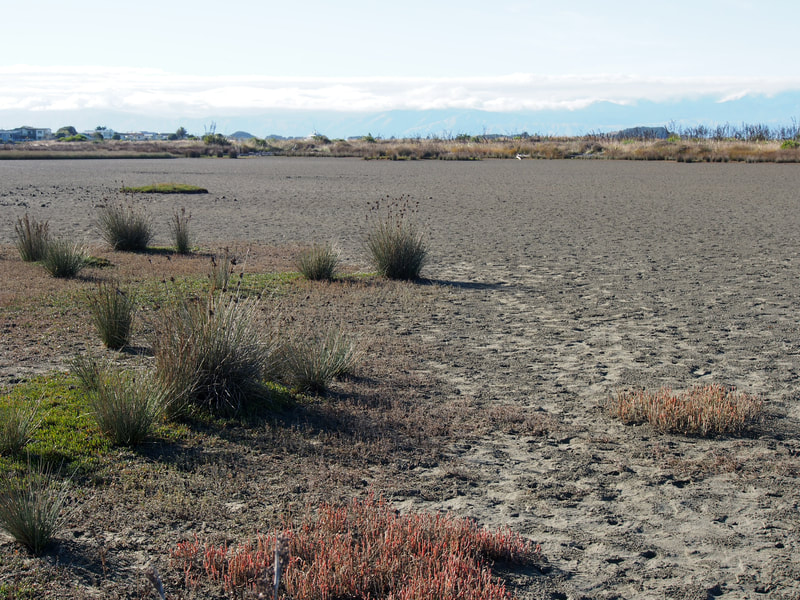
 RSS Feed
RSS Feed